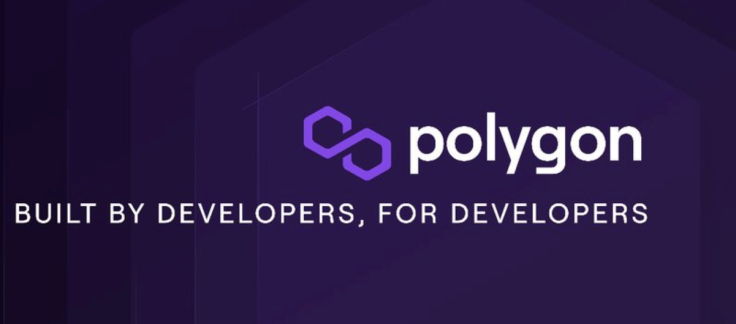This Crypto Will Be The Solana Of 2022
KEY POINTS
- The Merge won't mean the end for Polygon -- it's actually just the beginning
- Polygon is building its blockchain to support all of Web3.0
- Even in a crypto winter, Polygon is building new partnerships
Fresh off the long-awaited upgrade to proof of stake, known as The Merge, many crypto investors likely think Ethereum (ETH -4.00%) possesses the most potential for lucrative returns in the coming years.
While that thinking isn't necessarily wrong, there is one benefactor of The Merge not named Ethereum. Known as a Layer 2 blockchain, Polygon (MATIC -4.93%) is in a position to directly benefit from Ethereum's transition to proof of stake.
As a Layer 2 blockchain, and more specifically a sidechain, Polygon works with Ethereum to make transactions on the blockchain cheaper and faster for users. Since becoming one of the most popular blockchains in the last few years, Ethereum's network has been plagued with congestion that causes speeds to trickle to a near standstill and fees to skyrocket at times.
Polygon streamlines Ethereum by processing transactions on its own blockchain and then adding them back to Ethereum at a later date. In doing so, users get the best of both worlds: fast speeds and cheap fees with the security and decentralization of Ethereum.
Understanding The Merge is crucial
In the days and months leading up to The Merge there have been a handful of misconceptions regarding what exactly would happen to Ethereum once it moved over to a proof-of-stake consensus mechanism. The primary one is that speeds would increase and fees would come down. However, that is not the case. For that to happen, Ethereum's network capacity needs to increase and the move to proof of stake doesn't increase capacity.
An increase in network capacity is scheduled for sometime in 2023 when the blockchain launches a process called sharding. With sharding, Ethereum's main blockchain is divided up into smaller, more efficient chains. This increase in capacity will then bring down those fees and increase speeds.
Ethereum needs Polygon
You might be thinking, wouldn't that mean the end for Polygon since Ethereum will eventually solve its own problems?
Surprisingly, that's not the case. Ethereum developers plan on working "synergistically" with Layer 2 solutions like Polygon to "continue to reduce network congestion and increase transactions per second," according to the Ethereum website, so that Ethereum can one day serve the needs of a new age of the internet known as Web3.0.
Compared to the current stage known as Web2.0, Web3.0 aims to return power to individuals rather than corporations. The internet users are familiar with today is operated by companies that provide services in exchange for your personal data. With Web3.0, the internet will become completely decentralized, permissionless, and entirely open source.
For Ethereum to reach this goal, it must greatly increase its capacity and transaction speeds. Even with sharding, it's estimated Ethereum would only be able to process somewhere around 1,280 transactions per second (tps), a nice increase from the current 20 tps now, but not enough to handle all of the world's traffic.
To obtain its lofty goal, Ethereum will need a little help, something Polygon was designed to do. It's believed that Polygon can handle around 7,000 tps at the moment and once sharding comes along, that number could increase exponentially. Experts think that when combining the potential of Layer 2s and sharding, Ethereum could reach speeds as high as 100,000 tps.

Companies are starting to take notice
Despite being in the midst of a brutal crypto winter, Polygon has been busy this year further developing its blockchain and making partnerships with some of the most well-known companies in the world as its technology becomes more sought after.
Polygon has partnered with Coca-Cola, Meta Platforms, and Walt Disney all in the last three months. The well-known beverage company released a collection of non-fungible tokens (NFTs) on the blockchain back in August. Meta made the decision to add Polygon-based NFTs to social media platforms Facebook and Instagram. And probably the most exciting partnership came with Disney when Polygon was selected as an inductee into the entertainment giant's Accelerator Program, a venture capitalist branch that aims to partner with up-and-coming companies to further fulfill Disney's vision.
Polygon doesn't seem to be stopping anytime soon. It is all in on becoming the primary scaling solution for Ethereum and Web3.0. Polygon co-founder Mihailo Bjelic envisions Polygon eventually becoming "the holy grail of Web3 infrastructure." He believes the ideal Web3.0 blockchain should possess three primary characteristics: "scalability, security, and Ethereum compatibility," something Polygon surely meets. As Web3.0 continues to progress, investors should count on Polygon remaining at the forefront of its development.
This article originally appeared in The Motley Fool.
RJ Fulton has positions in Ethereum. The Motley Fool has positions in and recommends Ethereum and Polygon. The Motley Fool has a disclosure policy.



















